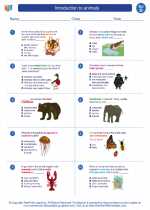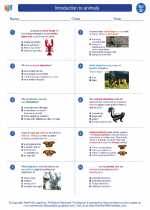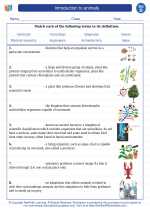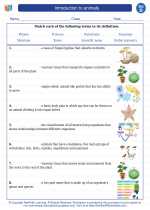Modeling in Science
Modeling in science is the process of creating simplified representations of complex phenomena in order to better understand and explain them. Models can come in various forms, including physical models, mathematical models, computer simulations, and conceptual models. They are used to make predictions, test hypotheses, and communicate scientific concepts.
Types of Models
- Physical Models: These are three-dimensional representations of objects or systems, often built to scale using materials like clay, paper, or wood. They are useful for studying the structure and behavior of real-world objects.
- Mathematical Models: These are created using mathematical equations and formulas to describe the relationships between different variables in a system. They are used to make quantitative predictions and analyze data.
- Computer Simulations: These are virtual models that use computer software to simulate the behavior of complex systems. They are useful for studying processes that are difficult or impossible to observe directly.
- Conceptual Models: These are simplified, often visual, representations that help scientists and students understand abstract concepts or relationships. They are used to illustrate ideas and make them easier to grasp.
Uses of Models
Models are used in science for a variety of purposes, including:
- Understanding complex systems
- Making predictions and hypotheses
- Testing the effects of different variables
- Communicating scientific concepts
- Developing new technologies
Study Guide
To better understand the concept of modeling in science, you can follow these study tips:
- Research different types of models used in science and provide examples of each.
- Explain the importance of modeling in scientific research and discovery.
- Compare and contrast physical models, mathematical models, and computer simulations in terms of their strengths and limitations.
- Discuss how models are used in specific scientific disciplines, such as biology, physics, and environmental science.
- Create your own simple model to illustrate a scientific concept or phenomenon, and explain its purpose and utility.
By exploring these aspects of modeling, you can gain a deeper appreciation for the role of models in scientific inquiry and discovery.
.◂Science Worksheets and Study Guides Fourth Grade. Introduction to animals
Study Guide Introduction to animals
Introduction to animals  Worksheet/Answer key
Worksheet/Answer key Introduction to animals
Introduction to animals  Worksheet/Answer key
Worksheet/Answer key Introduction to animals
Introduction to animals  Worksheet/Answer key
Worksheet/Answer key Introduction to animals
Introduction to animals  Vocabulary/Answer key
Vocabulary/Answer key Introduction to animals
Introduction to animals  Vocabulary/Answer key
Vocabulary/Answer key Introduction to animals
Introduction to animals  Vocabulary/Answer key
Vocabulary/Answer key Introduction to animals
Introduction to animals  Vocabulary/Answer key
Vocabulary/Answer key Introduction to animals
Introduction to animals 

 Worksheet/Answer key
Worksheet/Answer key
 Worksheet/Answer key
Worksheet/Answer key
 Worksheet/Answer key
Worksheet/Answer key
 Vocabulary/Answer key
Vocabulary/Answer key
 Vocabulary/Answer key
Vocabulary/Answer key
 Vocabulary/Answer key
Vocabulary/Answer key
 Vocabulary/Answer key
Vocabulary/Answer key

The resources above cover the following skills:
Concepts of Life Science (SC1, SC2, SC3)
The student demonstrates an understanding of how science explains changes in life forms over time, including genetics, heredity, the process of natural selection and biological evolution by showing the relationship between physical characteristics of Alaskan organisms and the environment in which they live.